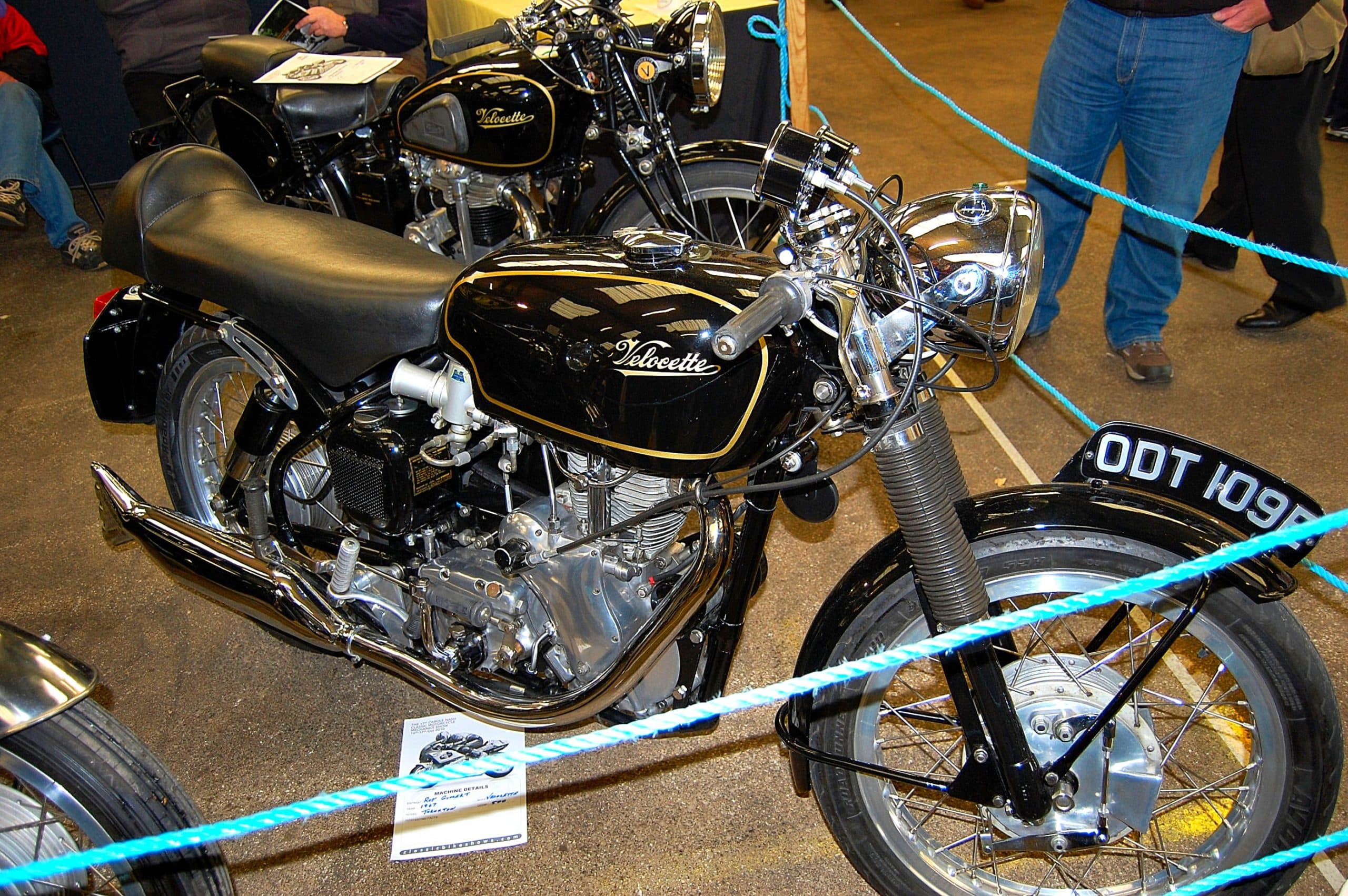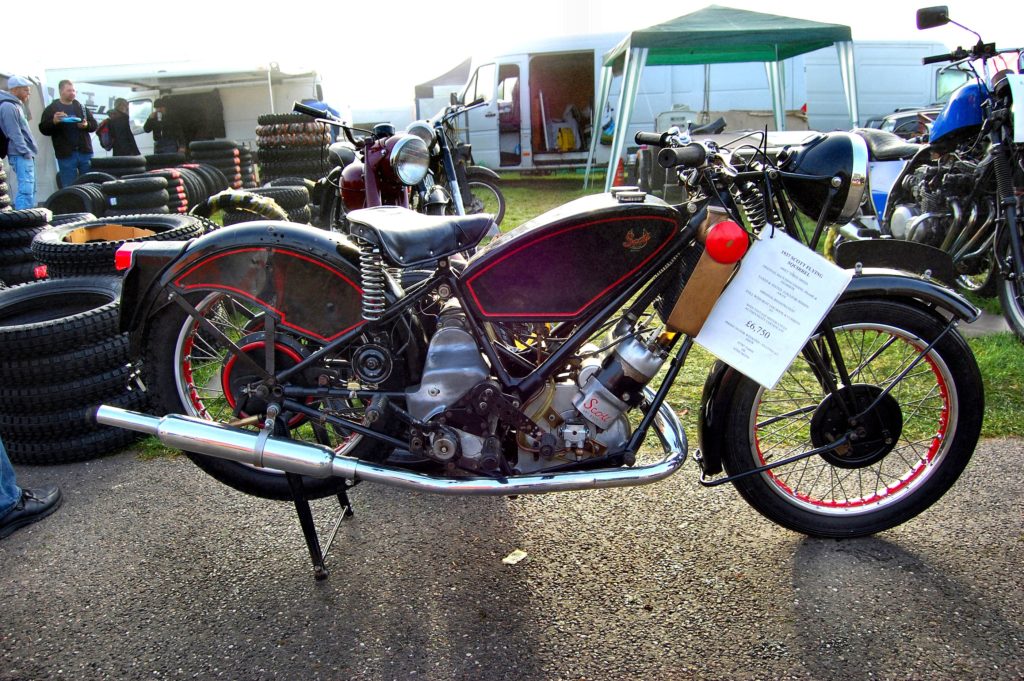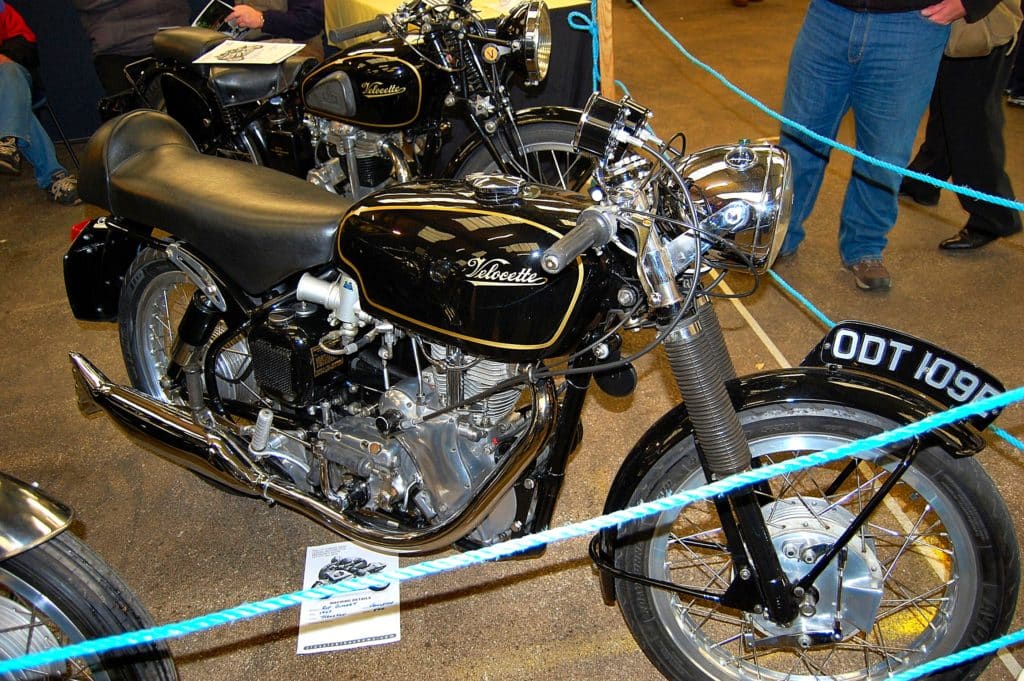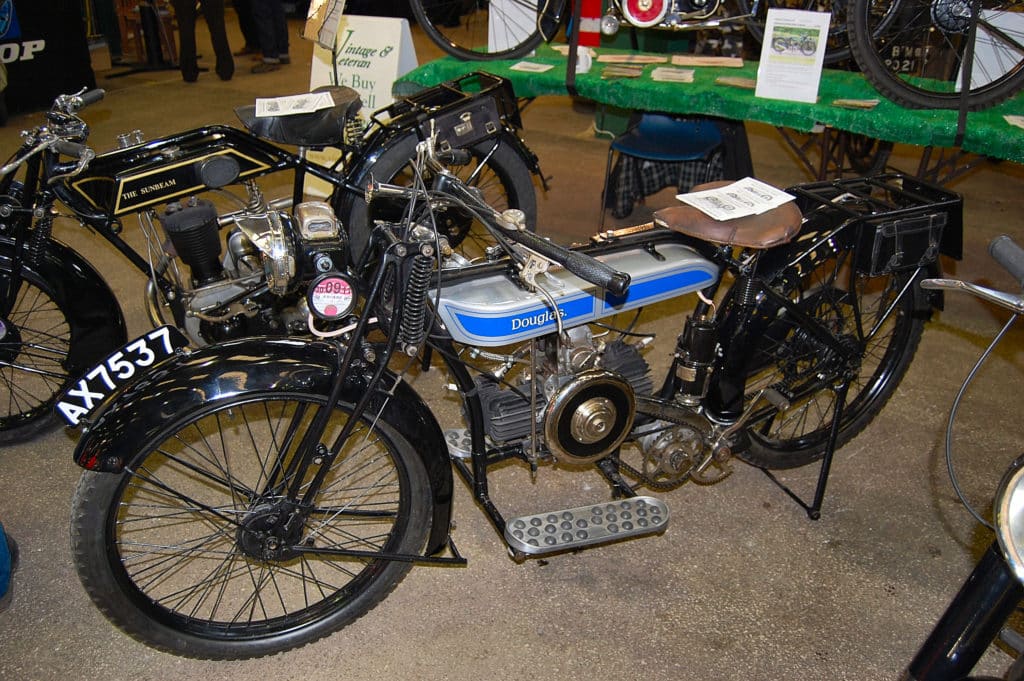Introduction
The history of the motorcycle is a fascinating journey that spans over 100 years of innovation. This invention has become an iconic symbol of freedom, adventure, and speed. In this article, we will take a closer look at the origins and evolution of motorcycles, exploring how they have shaped the modern world and the lifestyle associated with them.
The fascination with motorcycles and their rich history
Motorcycles have captivated people’s imaginations since their inception. The combination of power, maneuverability, and excitement they offer has attracted millions of enthusiasts worldwide. From racing and touring to commuting and leisure, motorcycles have become synonymous with freedom and individuality.
The history of motorcycles is a testament to human ingenuity and the desire for exploration. It all began in the late 19th century when inventors started experimenting with motorized bicycles. These early prototypes gradually evolved into the first recognizable motorcycles, equipped with engines, frames, and other essential components.
The significance of knowing who invented motorbikes
Understanding the origins of motorcycles can provide valuable insights into the evolution of transportation and technological advancements. Several inventors played crucial roles in developing the early motorcycles.
One of the pioneers was Gottlieb Daimler, a German engineer who created the first gasoline-powered motorcycle in 1885. His invention paved the way for the future of motorcycle engineering and design. Other notable inventors include Sylvester Roper, who built a steam-powered motorcycle in the late 1860s, and Ernest and Charles Rudge, who introduced the first successful motorcycle with a detachable sidecar in 1902.
Knowing who invented motorbikes allows us to acknowledge the contributions of these innovators and appreciate the rich history behind the machines we ride today. It is a reminder that the modern motorcycle is the result of continuous innovation and refinement, shaped by the efforts of countless individuals over the years.
In the following sections, we will delve deeper into the different eras and milestones that have marked the evolution of motorcycles, exploring their impact on society and culture. Join us as we embark on a thrilling journey through time, uncovering the captivating history of the motorcycle.
The Early Bicycle: Velocipede
The history of the motorcycle is closely linked to that of its predecessor—the bicycle. In the late 19th century, the velocipede, a type of early bicycle, was popularized. These early bicycles had their pedals attached to the front wheel axle, making them the precursor to modern-day bicycles.
The evolution of the bicycle and its influence on motorcycle development
The invention of the velocipede marked a significant milestone in transportation history. As inventors and engineers sought ways to improve the bicycle’s efficiency and speed, they began experimenting with adding engines to these two-wheeled vehicles. This marked the beginning of the motorcycle’s evolution.
The velocipede: the precursor to the modern motorcycle
One American inventor, Sylvester Roper, played a crucial role in the development of the motorcycle. In 1867, after years of experimentation, Roper created a version of the velocipede that was powered by a small engine. This early motorcycle had the capability of reaching speeds up to 40 mph, showing the potential for the future of motorized two-wheeled transportation.
Other inventors, such as Gottlieb Daimler and Ernest and Charles Rudge, also contributed to the development of motorcycles. Daimler, a German engineer, created the first gasoline-powered motorcycle in 1885, paving the way for future advancements in motorcycle design and engineering. The Rudge brothers introduced the first successful motorcycle with a detachable sidecar in 1902, further expanding the possibilities for motorcycle functionality.
The evolution of motorcycles from the early velocipedes showcases the constant innovation and refinement that has shaped these machines over the years. From their humble beginnings as motorized bicycles to the powerful and sleek motorcycles we know today, motorcycles have become an integral part of transportation and a symbol of freedom, adventure, and speed.
The fascinating history of motorcycles and their impact on society and culture will continue to evolve as new technologies and designs emerge. Understanding the rich history behind these machines allows us to appreciate the contributions of the inventors and engineers who have played a part in shaping the modern motorcycle. Join us as we delve deeper into the different eras and milestones that have marked the evolution of motorcycles, uncovering the captivating history that continues to inspire motorcycle enthusiasts worldwide.
The First Motorcycle: Roper’s Invention
Sylvester Roper and his invention of the first true motorcycle
Sylvester Roper, an American inventor, played a crucial role in the development of the motorcycle. In 1867, after years of experimentation, Roper created a version of the velocipede that was powered by a small engine. This early motorcycle had the capability of reaching speeds up to 40 mph, showing the potential for the future of motorized two-wheeled transportation.
The features and design of Roper’s motorcycle
Roper’s motorcycle featured a compact engine mounted on the frame of the bicycle, providing the necessary power for propulsion. The engine was fueled by gasoline, which was a groundbreaking innovation at the time. The motorcycle had two wheels, just like the velocipede it was based on, but with the addition of the engine, it became a truly revolutionary mode of transportation.
The design of Roper’s motorcycle incorporated elements that would later become standard in motorcycle design. It had a handlebar for steering and a saddle for the rider to sit on. The engine was connected to the rear wheel through a chain, allowing for efficient power transfer. Roper’s motorcycle showcased the potential for motorized two-wheeled vehicles and set the stage for future advancements in motorcycle engineering and design.
The invention of the motorcycle by Sylvester Roper marked a significant milestone in transportation history. It paved the way for the development of motorcycles as we know them today, with their powerful engines and sleek designs. Roper’s motorcycle demonstrated the possibilities of motorized two-wheeled transportation, and his contributions laid the foundation for the further evolution and refinement of motorcycles.
Daimler’s Motorized Bicycle
Gottlieb Daimler’s contribution to motorcycle history
Gottlieb Daimler, a German engineer and inventor, played a pivotal role in the advancement of motorcycles. In 1885, Daimler created a motorized bicycle, also known as the “Reitwagen,” which is considered to be one of the earliest motorcycles ever made. Building upon the foundations laid by Sylvester Roper, Daimler’s motorized bicycle made significant advancements in engine technology and design.
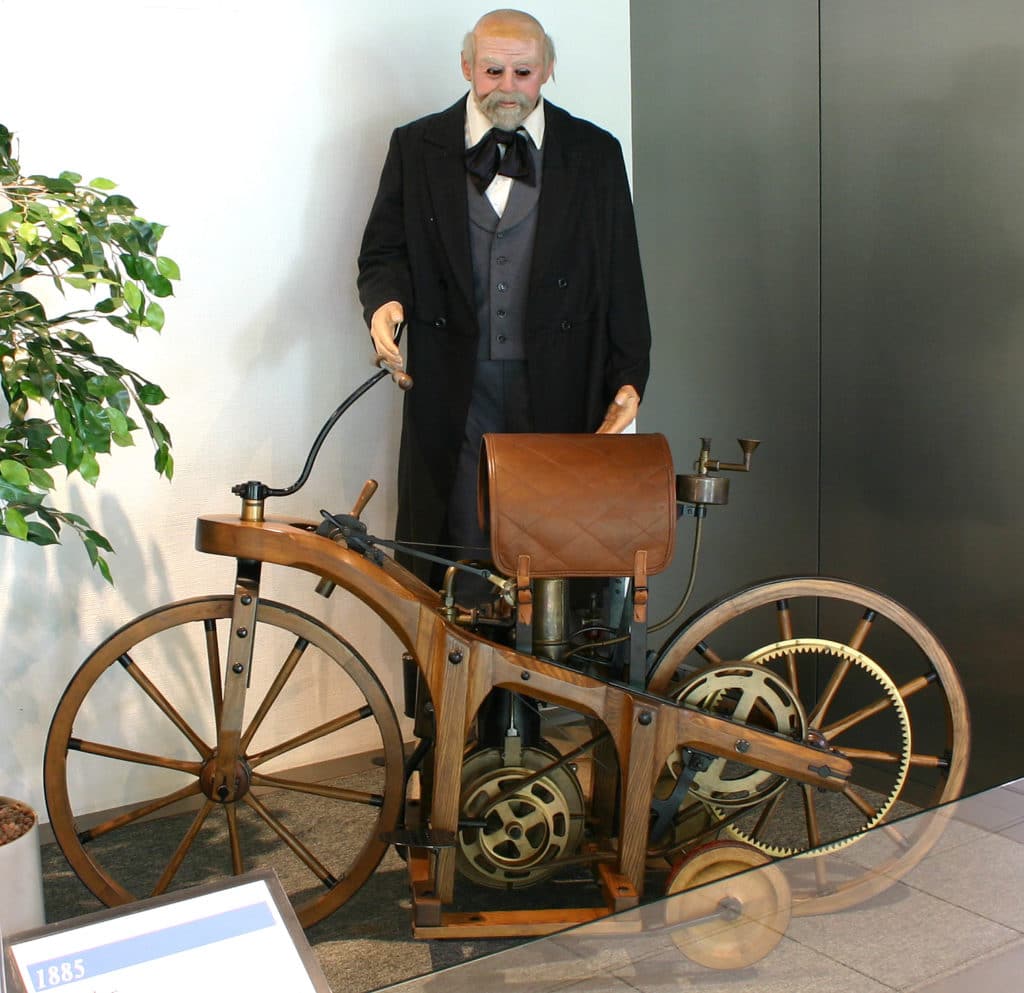
The impact of Daimler’s motorized bicycle on motorcycle design
Daimler’s motorized bicycle featured a lightweight, internal combustion engine that was mounted on a specially-designed frame. The engine ran on petroleum and was equipped with a spray nozzle that enabled it to atomize the fuel, a feature that significantly enhanced its efficiency. This innovation revolutionized motorcycle design, as it marked the transition from steam-powered or pedal-assisted motorcycles to motorcycles powered solely by an internal combustion engine.
The motorized bicycle had a single cylinder engine and a cam-driven intake valve, allowing for improved control of the combustion process. It also introduced the concept of using a float-feed carburetor to ensure a consistent fuel supply. These advancements in engine technology greatly contributed to the development of more powerful, reliable, and efficient motorcycles in the years to come.
In addition to the innovative engine, Daimler’s motorized bicycle featured a belt drive system that transferred power from the engine to the rear wheel. This design eliminated the need for a chain, reducing noise and maintenance requirements. The bike also had a unique twin-lever steering system that allowed for greater maneuverability.
Daimler’s motorized bicycle set a new standard for motorcycle design, establishing the blueprint for future motorcycles. Its lightweight, powerful engine and streamlined design paved the way for the development of modern motorcycles with higher speeds and improved handling. Daimler’s contributions to motorcycle engineering and design continue to influence the industry to this day.
The Rise of Indian and Harley-Davidson
The early success and rivalry between Indian and Harley-Davidson
In the early 20th century, two American motorcycle manufacturers emerged as leaders in the industry: Indian and Harley-Davidson. Founded in 1901, Indian quickly gained popularity with its high-quality motorcycles, attracting a loyal customer base. Not long after, in 1903, Harley-Davidson sold their first production motorcycle, marking the beginning of their own success story.
As the years went by, Indian and Harley-Davidson became fierce rivals, comparable to other famous rivalries like the Red Sox vs. Yankees or Coke vs. Pepsi. Their competition fueled innovation and advancements in motorcycle technology. Both companies constantly pushed the boundaries of design and performance to win over customers and claim the title of the best American motorcycle brand.
The influence of these brands on motorcycle culture
By the early 1930s, Indian and Harley-Davidson were the only remaining motorcycle manufacturers in America, solidifying their influence on motorcycle culture. These brands became synonymous with American motorcycling, embodying freedom, rebellion, and the spirit of the open road.
Their impact extended beyond the US borders as well. In 1935, Harley-Davidson licensed their blueprints and machinery to the Sankyo Company of Japan, laying the groundwork for the birth of the Japanese motorcycle industry. This collaboration led to the creation of the Rikuo, Sankyo’s first bike, and marked the beginning of Japan’s own motorcycle manufacturing legacy.
Today, Indian and Harley-Davidson motorcycles continue to captivate enthusiasts and riders worldwide. Their iconic designs, powerful engines, and rich history have made them enduring symbols of motorcycle culture. Whether it’s the distinctive growl of a Harley-Davidson V-twin or the classic styling of an Indian Chief, these brands have left an indelible mark on the industry.
The rivalry between Indian and Harley-Davidson may have softened over time, but the legacy of their competition lives on. Motorcycle enthusiasts continue to debate which brand is superior, fueling a sense of camaraderie and pride among riders. Ultimately, the rise of Indian and Harley-Davidson has shaped the motorcycle landscape and left an undeniable imprint on the history of motorcycles.
The Introduction of the Internal Combustion Engine
The integration of the internal combustion engine in motorcycles
In the late 19th century, the invention of the internal combustion engine revolutionized transportation. This new technology ignited the development of motorcycles as we know them today. Motorcycle pioneers recognized the potential of this engine and explored ways to incorporate it into their designs. The integration of the internal combustion engine marked a significant milestone in the history of motorcycles, as it replaced the previous technologies like steam-powered or pedal-driven engines.
The advancements in engine technology and performance
The integration of the internal combustion engine opened up new possibilities for engine technology and performance. Over the years, motorcycle manufacturers continually improved upon the design and efficiency of their engines. These advancements led to more powerful and reliable motorcycles, enhancing the riding experience for enthusiasts.
One notable advancement was the introduction of the four-stroke engine, which offered better fuel efficiency and smoother operation compared to the earlier two-stroke engines. This innovation allowed motorcycles to achieve higher speeds and better overall performance.
Manufacturers also focused on reducing the weight and size of engines while optimizing power output. Modern engines incorporate technologies such as fuel injection, variable valve timing, and electronic control systems to enhance performance and efficiency.
These advancements in engine technology not only improved motorcycle performance but also contributed to the overall development of the motorcycle industry. They played a crucial role in shaping the design, capabilities, and riding dynamics of motorcycles, allowing riders to experience the thrill of speed and agility on the open road.
The integration of the internal combustion engine and the advancements in engine technology have been instrumental in the evolution of motorcycles. Today, motorcycles come in various types and styles, ranging from high-performance sport bikes to comfortable touring motorcycles. The continuous innovation in engine technology fuels the passion for motorcycles and ensures that riders can enjoy exhilarating rides for years to come.
Motorcycle Innovations: Suspension and Brakes
The development of suspension systems for motorcycles
The evolution of motorcycle technology goes beyond just the engines. One crucial aspect of motorcycle design is the suspension system, which plays a significant role in providing comfort and stability to riders. Over the years, suspension systems have undergone significant advancements to enhance the overall riding experience.
Initially, early motorcycles had rigid frames with no suspension at all. This made for a bumpy and uncomfortable ride, especially on rough terrains. However, engineers quickly recognized the need for a solution and began experimenting with various suspension designs.
One of the earliest developments was the introduction of sprung forks, which provided some level of shock absorption. This helped improve rider comfort and stability, making the motorcycle more manageable to ride. As technology progressed, manufacturers continued to refine and improve suspension systems, incorporating features like telescopic forks and rear dual shock absorbers.
Telescopic forks became a popular choice due to their simplicity and effectiveness in absorbing shocks. This design allowed for better handling and control, making motorcycles more responsive to rider inputs. Rear dual shock absorbers further enhanced stability by distributing weight evenly and improving traction.
The evolution of braking technology for enhanced safety
Another critical aspect of motorcycle development is braking technology. In the early days, motorcycles had rudimentary braking systems, often relying on the rider’s physical force and manual methods to stop the bike. However, as the need for better safety and performance arose, advancements in braking technology quickly followed.
One notable milestone in braking technology was the adoption of disc brakes in the 1960s. Disc brakes provided reliable and consistent stopping power, enhancing rider confidence and safety. With the increasing speeds and demands of motorcycles, manufacturers also introduced anti-lock braking systems (ABS) in the late 1980s. ABS allows riders to maintain better control during emergency stops by preventing wheel lock-up.
Today, motorcycles are equipped with advanced braking systems that utilize hydraulic and electronic technologies. These systems ensure precise and efficient stopping power, even in adverse conditions. The integration of ABS, traction control, and other braking innovations has significantly improved motorcycle safety and reduced the risk of accidents.
Overall, the development of suspension systems and braking technology has been crucial in advancing the motorcycle industry. These innovations have not only improved rider comfort and safety but have also elevated the performance and capabilities of motorcycles. As technology continues to evolve, we can expect further enhancements in these areas, providing riders with even more exceptional riding experiences.
The Post-WWII Boom: Motorcycles in Pop Culture
The role of motorcycles in post-war society and pop culture
After World War II, motorcycles played a significant role in American society and pop culture. Returning soldiers, who had gained experience riding motorcycles during the war, brought their love for bikes back home. This led to a surge in the popularity of motorcycles as people sought adventure and freedom.
Motorcycles became a symbol of rebellion and individuality, offering a sense of escape from the constraints of daily life. The open road represented endless possibilities, and motorcycles became a vehicle for self-expression.
In addition to their appeal to veterans, motorcycles also became a transportation option for many Americans thanks to their affordability and efficiency. They provided a cheaper and more accessible alternative to cars, especially for young people who wanted to experience the thrill of riding.
The post-WWII era also saw the rise of motorcycle clubs and the birth of the biker subculture. Motorcycle clubs, such as the Hells Angels, became synonymous with freedom, camaraderie, and the rebellious spirit. These clubs played a significant role in shaping the image of the motorcycle lifestyle and its association with counterculture movements.
Movies, music, and the motorcycle lifestyle
Movies and music further amplified the influence of motorcycles in pop culture. Films like “Easy Rider” (1969) and “The Wild One” (1953) featured iconic motorcycle-riding protagonists, becoming cult classics that captured the essence of the motorcycle lifestyle.
The music industry also embraced motorcycles, with rock ‘n’ roll legends like Elvis Presley and Bob Dylan being avid motorcycle enthusiasts. Their love for bikes added an element of rebellion and rock ‘n’ roll attitude, further fueling the fascination with motorcycles in popular music.
The motorcycle culture resonated with people from all walks of life, transcending social barriers. It became a symbol of freedom, adventure, and non-conformity. The ruggedness, speed, and distinctive sound of motorcycles captivated the imagination of individuals, leaving a lasting impact on pop culture.
Conclusion
The post-WWII boom marked a pivotal moment for motorcycles, as they became deeply intertwined with American society and pop culture. The returning soldiers, seeking adventure and freedom, embraced motorcycles as a symbol of rebellion and individuality. Affordable and efficient, motorcycles also provided a transportation option for many Americans, especially the younger generation.
Motorcycle clubs, such as the infamous Hells Angels, played a significant role in shaping the image of the motorcycle lifestyle and its association with counterculture movements. Movies like “Easy Rider” and “The Wild One” showcased iconic motorcycle-riding protagonists, becoming cult classics that captured the essence of the motorcycle lifestyle. Rock ‘n’ roll legends like Elvis Presley and Bob Dylan further amplified the influence of motorcycles in popular music.
Motorcycles transcend social barriers, resonating with individuals from all walks of life. The ruggedness, speed, and distinctive sound of motorcycles captivate the imagination and leave a lasting impact on pop culture. As the motorcycle industry continues to evolve, reflecting the visionary spirit of its inventors, it remains a symbol of freedom, adventure, and non-conformity.
Reflecting on the inventors, innovations, and impact of motorcycles
The inventors of motorcycles were visionaries who revolutionized transportation. Their passion for innovation and design has shaped the motorcycle industry for over a century. From the first crude steam-powered bicycles to the sleek and powerful machines of today, motorcycle advancements continue to push the boundaries of technology.
Motivated by a desire for freedom, adventure, and the pursuit of speed, millions of individuals around the world have embraced the motorcycle lifestyle. This community of riders shares a common bond, united by their love for motorcycles and the exhilarating experiences they provide.
Appreciating the rich history and continued evolution of motorcycles
The history of motorcycles is a testament to human ingenuity and the power of innovation. As we reflect on the past century, we appreciate the contributions of inventors, designers, and enthusiasts who have shaped the world of motorcycles.
While motorcycles have come a long way since their humble beginnings, their spirit of adventure and individuality remains unchanged. Whether it’s the roar of a classic Harley-Davidson or the silent power of an electric motorcycle, these two-wheeled vehicles continue to captivate riders and inspire a sense of freedom.
As technology continues to advance, motorcycles will undoubtedly undergo further evolution. Electric motorcycles are gaining popularity as the world becomes more environmentally conscious, and autonomous motorcycle technology may shape the future of transportation.
From the open road to the racetrack, motorcycles continue to capture our imagination and push the boundaries of what is possible. As we look back on the history of the motorcycle, we eagerly anticipate the innovations and adventures that lie ahead.
FAQ: Who Invented Motorbikes? Diving into the History of Motorcycle Inventions and Innovations
Q: Who is credited with inventing the motorbike?
A: The invention of the motorbike is often attributed to multiple inventors who worked independently. However, Gottlieb Daimler and Wilhelm Maybach are widely recognized as pioneers of the modern motorcycle.
Q: When was the first motorbike invented?
A: The first motorbike, or at least its precursor, was invented in the mid-19th century. However, the development of internal combustion engines and other mechanical advancements during this time paved the way for the invention of the modern motorbike.
Q: What was the first motorbike like?
A: The first motorbike, known as the “Daimler Reitwagen,” was a steam-powered, wooden-framed contraption with two wheels. It had a coal-fired boiler and a single cylinder engine that produced approximately 0.5 horsepower. The rider had to operate the vehicle with the help of a pair of handlebars and a lever-like throttle.
Q: How did the motorbike evolve over time?
A: Over the years, the motorbike underwent significant transformations driven by technological advancements and the vision of inventors and engineers. The steam-powered design eventually gave way to the internal combustion engine, which powered most modern motorbikes. The addition of suspension systems, gears, brakes, and other essential features made motorcycles safer, more comfortable, and efficient.
Q: Who were some other key figures in the evolution of motorbikes?
A: Alongside Daimler and Maybach, numerous other inventors played vital roles in the evolution of motorbikes. Some notable figures include Sylvester Howard Roper, who built a steam-powered velocipede in the 1860s, and Nicolas-Joseph Cugnot, a French inventor credited with building one of the earliest self-propelled vehicles in the late 18th century.
Q: When did motorbikes become popular?
A: The popularity of motorbikes grew steadily throughout the late 19th and early 20th centuries. They gained widespread recognition as a convenient and exciting mode of transportation. Racing events and the affordability of motorcycles contributed to their rising popularity among the masses.
Q: What were some key innovations in motorbike design?
A: Several innovations have shaped the development of motorbikes. Some notable examples include the introduction of chain drives to transmit power from the engine to the rear wheel, the creation of lightweight frames made of aluminum or carbon fiber, and the application of electronic fuel injection to improve fuel efficiency and performance.
Q: How have motorbikes influenced transportation and culture?
A: Motorbikes have had a profound impact on both transportation and popular culture. They provided an alternative mode of transport, especially in congested urban areas, and became symbols of freedom and adventure. Motorcycles have also played a significant role in motorsports, captured the imagination of writers and filmmakers, and influenced fashion trends.
Q: What does the future hold for motorbikes?
A: The future of motorbikes is likely to be characterized by advancements in electric propulsion systems, autonomous capabilities, and improved safety features. As the world embraces sustainable transportation solutions, electric motorcycles are gaining traction, offering a cleaner and quieter riding experience. Additionally, ongoing technological advancements and a focus on rider safety will continue to shape the future of motorbikes.

David Williams is an author with a passion for motorcycles and all things related to the world of two-wheeled vehicles. His expertise is evident on his website, The Moto Expert, where he shares his knowledge and insights with fellow enthusiasts. Follow him on social media to stay up-to-date on the latest motorcycle news, reviews, and trends. Whether you’re a seasoned rider or just starting out, David’s content is sure to inform and entertain. Join his community and become a part of the conversation today.

